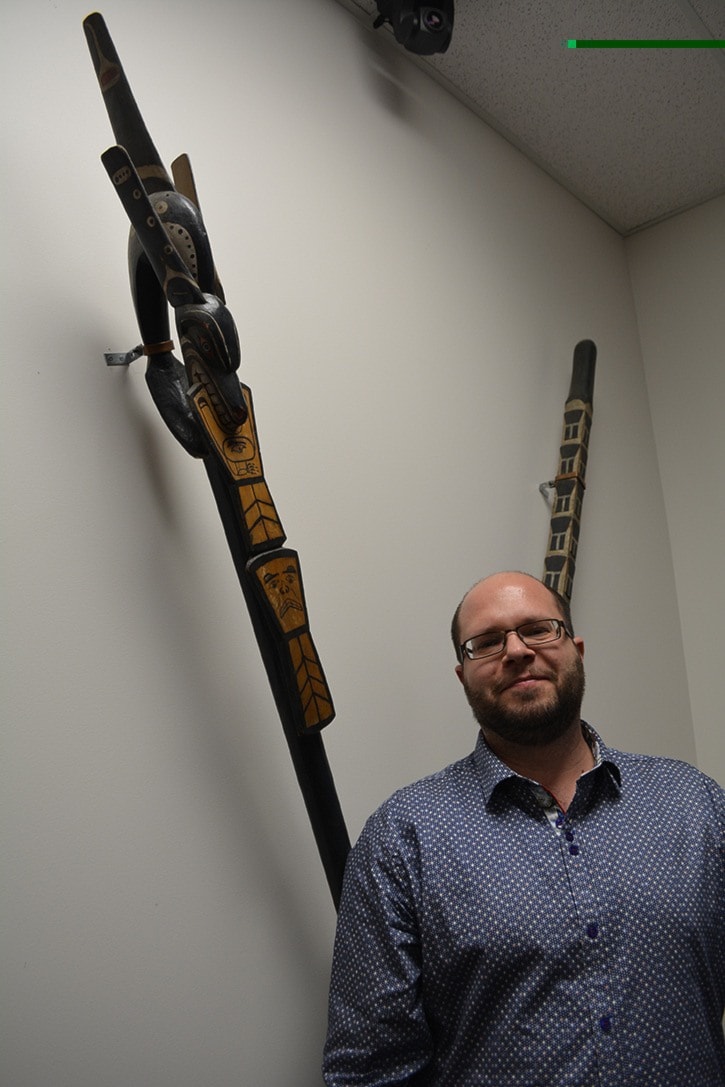The search has begun into the origins of two talking sticks presented to the city when the city hall was officially opened back in 1964.
It follows the adoption of a motion made late last month by city councillor Michael Prevost who first noticed them hanging on the wall of the council chambers this fall.
“It’s part of our duty to question how these talking sticks were acquired,” Prevost told council.
“I think it’s prudent for us to move forward and if it’s found that these talking sticks were obtained unjustly, to look at repatriating them,” he said.
He noted there’s already been online commentary, assisted by pictures of the talking sticks, among people as to who may have crafted them.
Within the aboriginal community a talking stick is regarded as a sign of authority to speak on significant issues.
That would seem to fit the wording on a plaque that was presented along with the talking sticks in 1964 as to the role of the city and of city council in acting for city residents.
Dated Aug. 1, 1964, the plaque indicates the items were donated “to the District of Terrace by Skeena Forest Products Ltd. Pohle Lumber Co. Ltd.”
“These sticks originate from either Kingcome Inlet or Gilford Island-Southern Kwakiutl Tribe,” reads the plaque, continuing to explain “talking sticks were used in tribal councils by the ‘official speaker’ for a chief of a tribe to emphasize pertinent points in his speech, and generally denoted the clan and rank of the chief.”
Prevost, a registered nurse who first got a degree in archaeology and anthropology, said access and control of one’s own cultural heritage is a right and essential to one’s identity, well-being and worldview.
“It was truly unsettling and uncomfortable for me to see these cultural items on display in council chambers and I began asking myself questions about their origin and how city hall came to be in possession of these two talking sticks,” said Prevost.
In its last strategic plan, the City of Terrace identified that partnering with others is important and that it values its relationships with the First Nations who are our neighbours, he said.
“I saw this resolution as an opportunity for the city to continue to meet its strategic goals at a community level,” said Prevost.
“If we are able to understand more of the history of these two cultural items, we may have an opportunity to repatriate these culturally significant items to their rightful owner if they are able and willing to accept them.”
Prevost said the issue is important because it follows the national goal of reconciliation with First Nations.
“I see the potential to repatriate the two pieces of cultural heritage as an opportunity to extend the reconciliation process,” he added.
One possible location of origin for the talking sticks is Kingcome Inlet on the mid-coast where the Dzawada’enuxw First Nation is located.
Dzawada’enuxw First Nation acting band manager and traditional chief Farron Soukochoff had received photos of the talking sticks but has not yet had a chance to show the photos to the other traditional chiefs or to the community’s cultural researchers
Soukochoff said that the talking sticks did raise a question.
“Usually when something like that was given, it was usually gifted, but why would they be gifted that far away?” he said.
Neither Skeena Forest Products nor Pohle Lumber exist today. But one of the principals of Skeena Forest Products, Francis Reif, now deceased, was known as a collector and dealer of aboriginal art.
